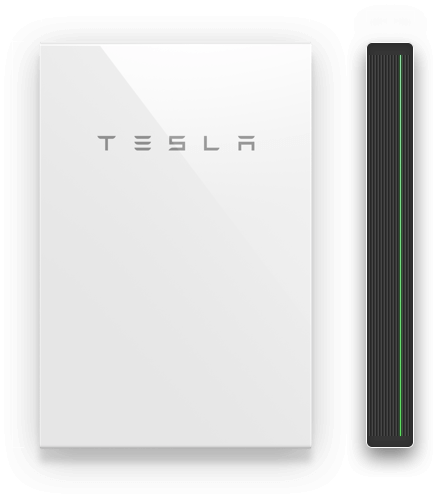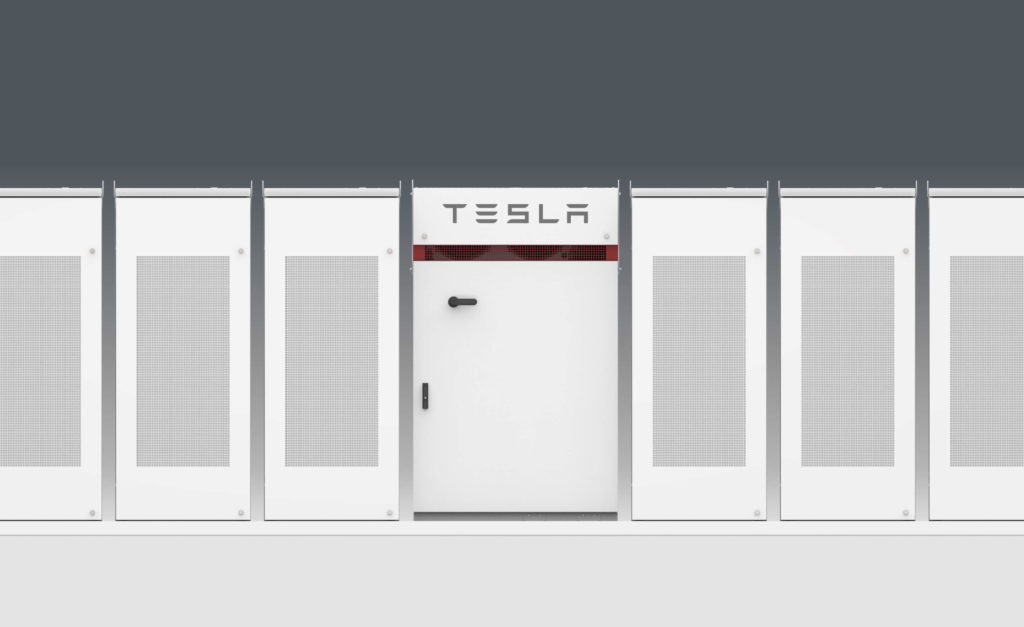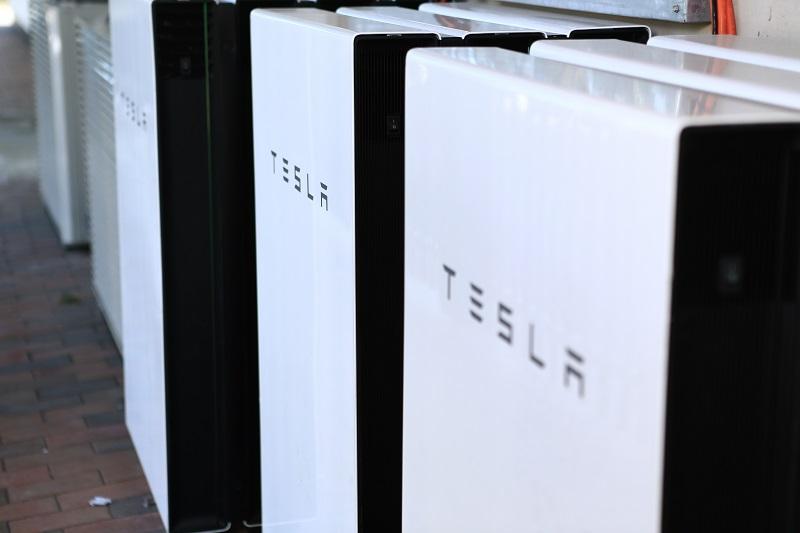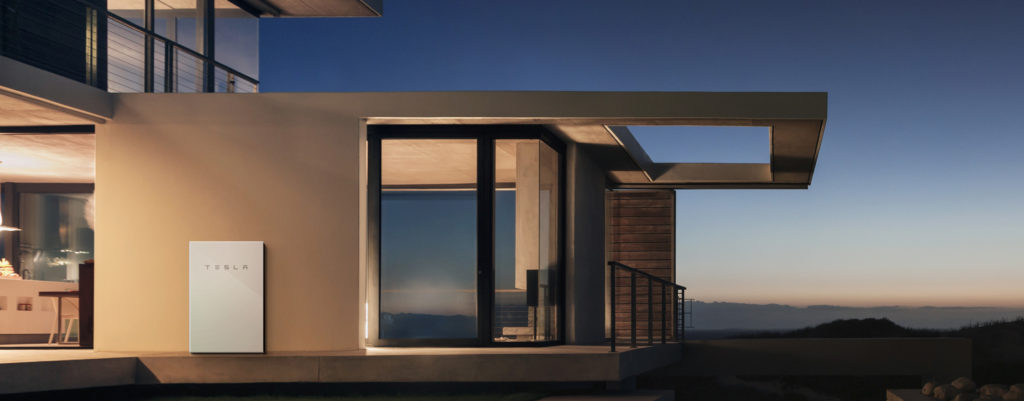POWERWALL TECHNOLOGY
The Tesla Powerwall 2 is one of the most advanced energy storage systems in the world, and the real magic behind it is the batteries. Tesla’s leadership in battery technology from the cell to the pack and into the finished products that utilise them highlights the fact that Tesla is truly not just an automotive company but really more of a broader tech company.
Tesla has created a Powerwall Overview and an AC Powerwall Owner’s Manual, which provides significantly more information for people interested in looking behind the curtain.
The Powerwall 2 is an advanced DC energy storage system with a usable capacity of 13.5 kilowatt-hours per Powerwall. For more storage capacity, multiple Powerwalls can be installed in parallel. As most businesses run on AC power, Tesla stacked an inverter on top of the battery pack that turns the stored DC power from the battery into AC power that all appliances can use. The inverter can push out the resulting AC power at 7kW peak or at a 5kW continuous rate. Bundling more Powerwall 2s together in a single installation also provides the capability to support even larger power draws.
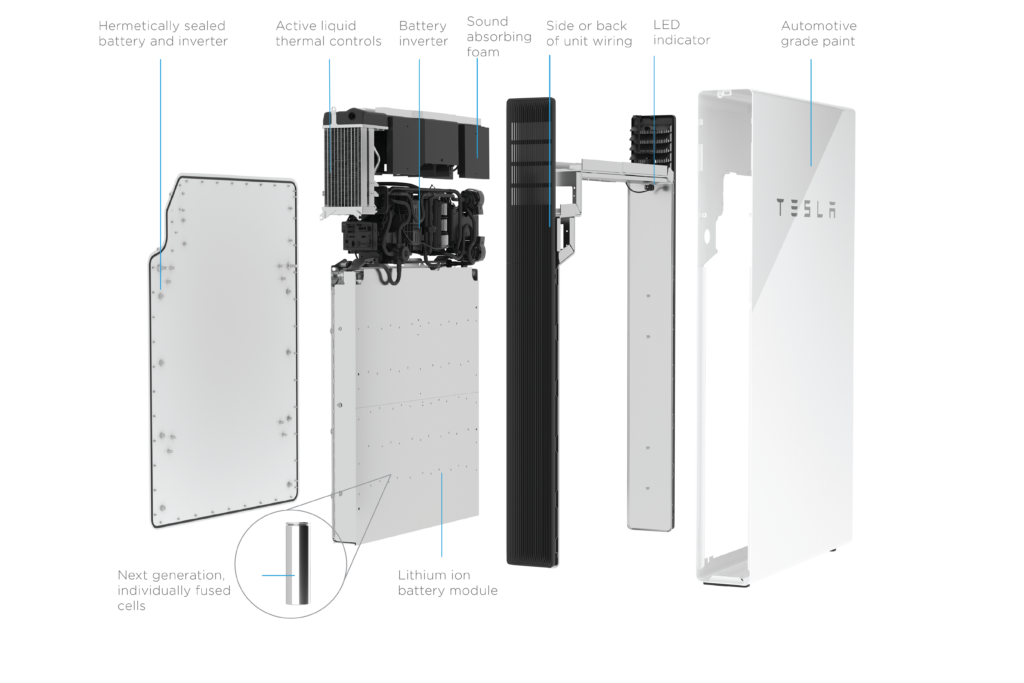
Conversely, when it comes time to charge, the inverter can turn AC power back into DC power that is stored in the battery. This inverter has a round trip efficiency of 90%, meaning that 10% of the power sent into the Powerwall to be stored is lost by the time it gets back out due to the inefficiencies of converting the power from AC to DC (going into the Powerwall) and from stored DC power back to usable AC power as it comes out of the Powerwall into the home.
Batteries are commonly rated, compared, and discussed based on their usable capacity, as listed in kilowatt-hours (kWh). Unfortunately, the world of storage capacities is not a straightforward one, with some manufacturers listing the total capacity of the battery cells in the unit even though some of it might be reserved to protect the life of the battery.
Tesla lists the capacity of its Powerwall 2 units in terms of usable capacity, which is the total amount of energy stored in the battery that can actually be used. It features a 100% depth of discharge, meaning that the entire 13.5 kWh of usable capacity can be pulled out, if needed.
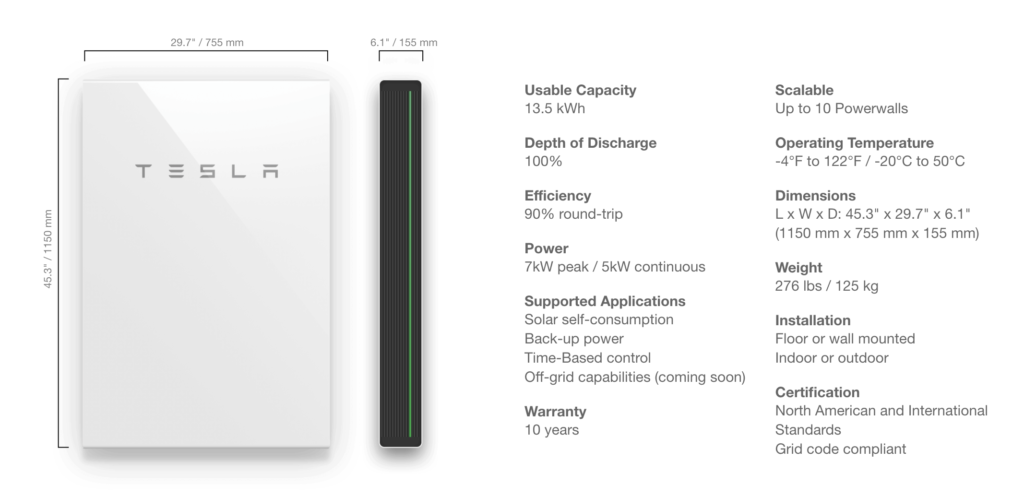
WHY CHOOSE POWERWALL?
Clean solar power round-the-clock
During the day your Solar PV system charges your battery. At night you draws electricity from your battery, powering your home or business with clean, sustainable energy around the clock. Powerwall 2 can also charge from the grid, it comprises of 13.5kWh of usable storage in a lithium-ion battery pack, which can power an average 2-bed property for an entire day.
Protect your home or business from power cuts with Backup Gateway
Now available with Backup Gateway to protect your home or business from the disruption of power cuts. Backup Gateway will detect a power outage and trigger your Powerwall 2 to take over. It will also ensure your Solar PV system continues to produce energy (without it Solar PV stops working during a power cut).
Extremely cost effective
With up to 13.5kWh of storage and capable of delivering 5kW of power continuously and up to 7kW for 10 second periods, the Powerwall is extremely good value as the price per kWh of storage is by far the lowest on the market.
Smart technology enables you to take advantage of time-of-use and export tariffs.
Sell electricity back to the grid at peak prices
Take advantage of new agile tariffs, selling power back to the grid during peak rates. Intelligent forecasting software learns when energy is most needed and helps maximise your financial benefits.
Peace of mind
iGen are a Tesla approved installer. We take care of everything from system design, DNO registration, installation and commissioning. Powerwall comes with a 10-year unlimited cycle warranty with guaranteed energy retention level when used in Self-Powered or Backup mode.
Flexible installation
The unit mounts seamlessly, indoors or outdoors, to a wall or the ground. In total 10 Powerwalls can be linked together to offer a massive 120 kWh of battery storage, ideal for larger homes or commercial application.

